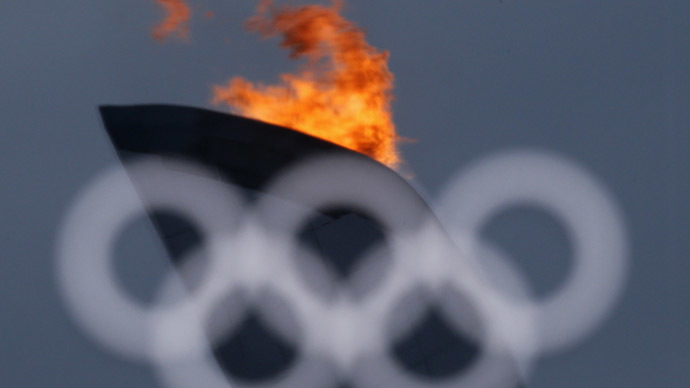Paralympic flames from 45 Russian cities unified in Sochi

The Paralympic flames arrived in Sochi late on Wednesday for the final stage of the torch relay, which will conclude at the opening ceremony of the XI Winter Games on Friday.
Rosa Khutor ski resort in the Sochi Mountains witnessed a
spectacular ceremony of the unification of the flames from 45
Russian cities and the UK town of Stoke Mandeville, where the
Paralympic movement was born.
During his welcome speech, International Paralympic Committee
president Sir Philip Craven expressed confidence that the
sporting achievements of the Sochi Games will provide conditions
for the creation of a barrier-free environment for disabled
people in Russia.
The flames from all the cities were gathered in a single bowl,
which was erected at the Medals Plaza – where winning athletes
will be celebrated during the Paralympics on March 7-17.
The final torch was then lit from the bowl. It was first handled
by the general secretary of the Russian Paralympic Committee,
Mikhail Terentyev.
Other torchbearers include 13-time track-and-field Paralympic
champion Rima Batalova and the director of the Sochi Olympics
opening ceremony, Konstantin Ernst.
The final stage of the relay will cover 26.6 kilometers both in
the mountains and central streets of Sochi, with 150 torchbearers
taking part.
The first spark of the first Olympic flame was lit on February 26
– not in Greece, but in Russia's Far East.
Since then, it has traveled across the country, in the hands of
more than 1,000 torchbearers.
Unlike its Olympic counterpart, the Paralympic flame can burn in
different places at the same time. This gave every city taking
part in the relay a chance to show off its creativity.
In Kaliningrad, the flame was produced by an amber stone in the
famous Amber Museum. In Pskov, it was lit from the spark of a
hammer and anvil.
But the prize for the most complicated approach goes to
Volgograd, which lit the flame by flashing mirrors that reflected
a beam on a gold medal belonging to Lyubov Vasilyeva – a champion
of the Sydney Paralympic Games.
For the first time in Paralympic history, the relay made an
international detour, traveling to the UK.
The flame arrived at Stoke Mandeville Stadium – where in 1948,
Dr. Ludwig Guttmann held the first ever Games for people with
physical disabilities.
The Paralympic torch is accented in sky blue instead of red – the
color used for the Sochi Olympics.
The designers believe the blue color signifies the strength of
character that is inherent in the disabled athletes who compete
at this level.
As the host country, Russia has stated many times that it is very
important for the Paralympians in Sochi to experience the Winter
Games to the same level of excellency that the Olympics were
conducted.
The Sochi Paralympics will see 72 sets of medals up for grabs for
the athletes – that’s just 26 less than in the Olympics.
The Games will feature disciplines such as alpine skiing,
biathlon, cross-country skiing, ice sledge hockey, wheelchair
curling, and para-snowboarding, which is making its Paralympic
debut.
The event has its own mascots, with Snowflake and Ray of Light
selected as the faces of the Sochi Paralympics.
Over 570 disabled athletes from 45 countries will participate in
the XI Paralympic Winter Games.












